How async communication combats groupthink
By Becky Kane
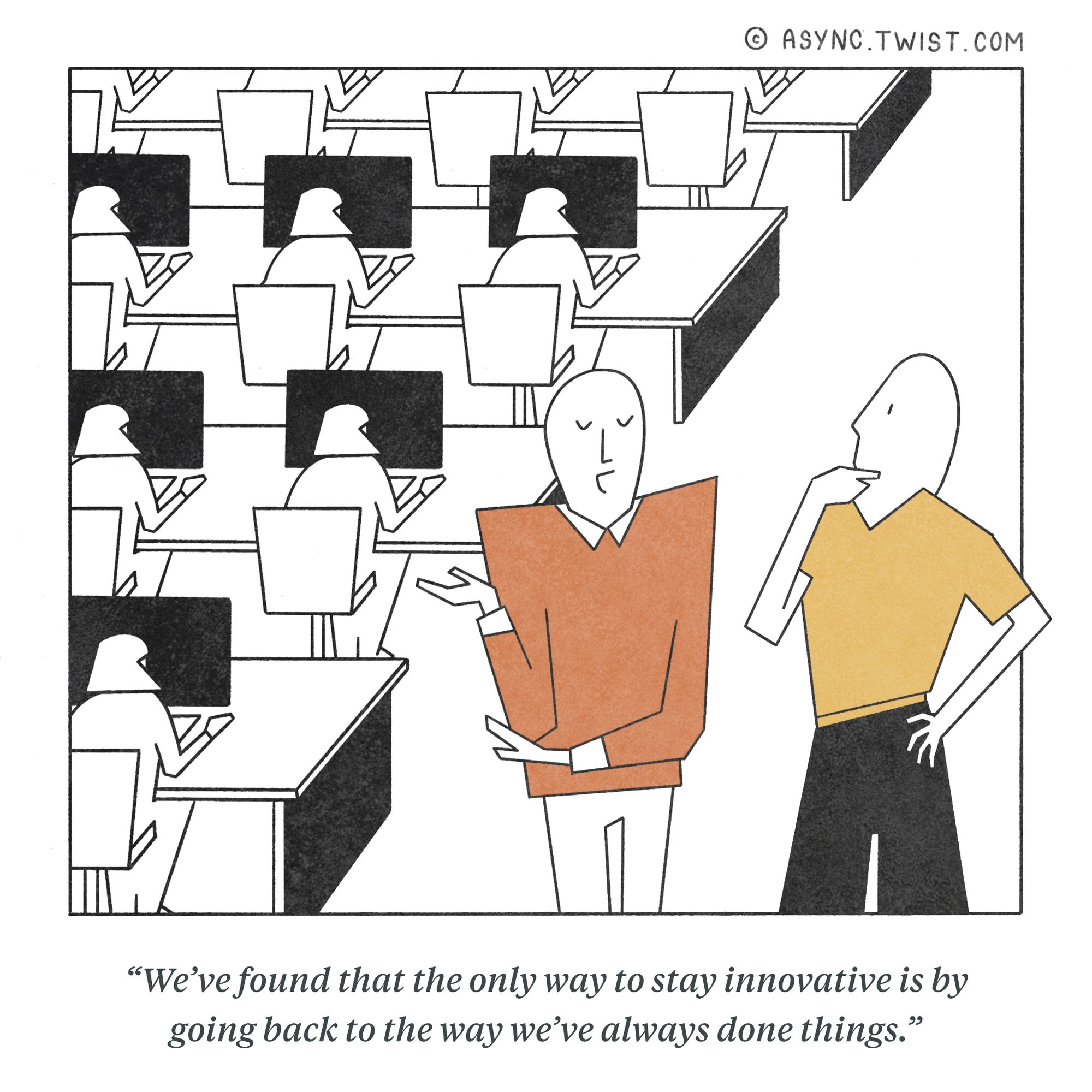
In 1948, an ad executive named Alex Osborn published a book called “Your Creative Power”. You may have never heard of it (I certainly hadn’t until recently), but you have undoubtedly been influenced by it.
Among many of Osborn’s novel tactics for getting your creative juices flowing, one concept stuck: “brainstorming”. According to Osborn, a group’s collective creative power is greater than the sum of its parts. All you have to do is get everyone together, present them with a problem, and have them throw out as many ideas as possible, feeding off the creative energy of the group. The key is to avoid all criticism — there’s no such thing as a bad idea.
Seventy odd years after Osborn coined the term, team brainstorming is still a staple of the modern workplace. I would be shocked if anyone reading this newsletter hasn’t participated in at least one at some point in their lives. Got a hard problem to solve? A campaign to cook up? A product to design? Let’s schedule a brainstorm!
The only problem is, Osborn’s theory of team creativity was dead wrong. From an excellent 2012 New Yorker article on the topic of groupthink:
The first empirical test of Osborn’s brainstorming technique was performed at Yale University, in 1958. Forty-eight male undergraduates were divided into twelve groups and given a series of creative puzzles. The groups were instructed to follow Osborn’s guidelines. As a control sample, the scientists gave the same puzzles to forty-eight students working by themselves. The results were a sobering refutation of Osborn. The solo students came up with roughly twice as many solutions as the brainstorming groups, and a panel of judges deemed their solutions more “feasible” and “effective.” Brainstorming didn’t unleash the potential of the group, but rather made each individual less creative.
Decades of subsequent research shows that group brainstorming results in fewer novel ideas than individuals brainstorming separately and later pooling their ideas. Why? Researchers believe there are a two dynamics at play that may sound familiar to anyone who’s participated in a brainstorming session:
The first is a phenomenon called production blocking — you have a great idea, but the group is talking about something else. Your comment, if you managed to find an opening to say it, is lost to the momentum of the conversation. According to Scientific American:
Introverts have a lot of difficulty with production blocking. It’s harder for them to formulate ideas in a crowded and noisy environment of team brainstorming. They generally think better in a quiet environment, by themselves or with one other person at most. And they have difficulty interrupting a stream of conversation, making it more likely for their idea to remain unstated or ignored.
The second is evaluation apprehension, a hesitation to speak up for fear of being judged or coming across as overly critical. People, particularly more junior members of the team, often stay silent, deferring to those they perceive as more experienced.
The research suggests that these social dynamics compound — the more people included in a brainstorm, the fewer new ideas are generated. However, the opposite holds true for asynchronous brainstorming — each new participant adds more ideas to the collective pool.
The research suggests that these social dynamics compound — the more people included in a brainstorm, the fewer new ideas are generated. However, the opposite holds true for asynchronous brainstorming — each new participant adds more ideas to the collective pool.
In a development – that will shock absolutely no one who has ever been on a Zoom call – brainstorms via videoconference generate even fewer ideas than those conducted in-person.
This research alone should be enough to make team leaders seriously reconsider how they foster creativity and innovation, but the ways in which real-time collaboration stifles alternative perspectives go beyond brainstorming sessions.
It’s simply harder to have hard conversations in real-time
A few months ago, I was on a team call discussing next steps on a big project. One of our brand designers pulled up a landing page mockup where he tried out a new design for a tricky section we had been discussing.
“What do you think?”
“Looks good!,” I said after a second, and the meeting moved on.
It was only while looking back at the mockup after logging off of Zoom that I realized I did not, in fact, think it looked good. Why the hell did I say that I did??
I’m one of the most senior members of the team and not particularly introverted. I knew the designer well. I wasn’t worried he’d be offended. As my teammates will attest, I have no problem pushing back on an idea and giving honest, direct feedback. But put on the spot, I reflexively gave the first knee-jerk response that came to mind.
At first, I chalked it up to an individual failing of mine for not being assertive enough (I am, afterall, a woman raised in the Midwest of the United States, doubly socialized to be pleasant and nice). But a couple of weeks later, I was on a call with another coworker who described the same phenomenon on his team’s weekly call.
Someone would present a problem and a possible solution. There might be some discussion, but everyone would tend to agree the solution seemed reasonable. The meeting would move on. Yet, after the fact, someone would inevitably think of an angle or risk that wasn't considered, and a much more substantive conversation would ensue asynchronously in a Twist thread.
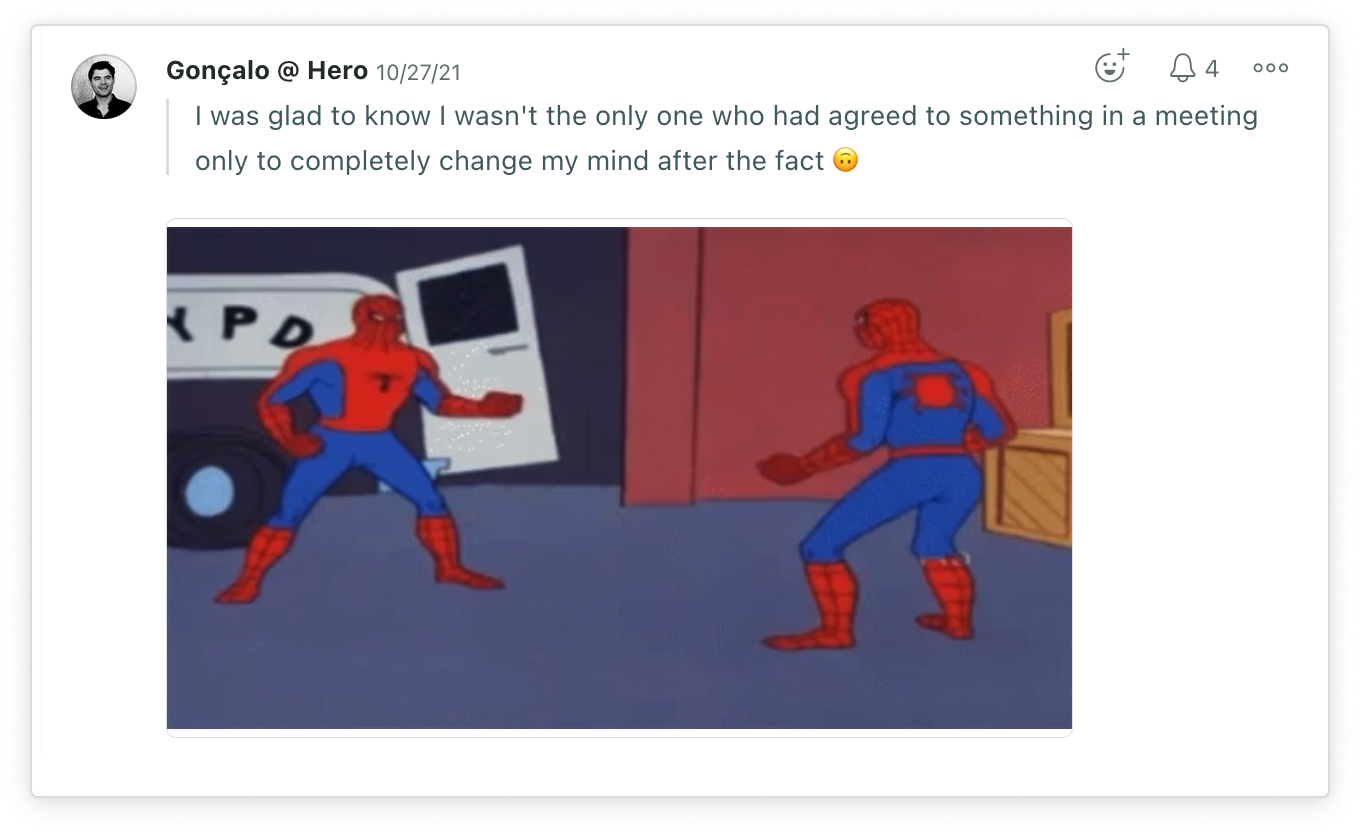
Unlike real-time collaboration, async work gives you the time to move past your first knee-jerk reaction, consider other perspectives, and formulate your thoughts constructively. Often you figure out what it is you actually think as you’re writing it out. It’s not uncommon for me to start a response to a thread thinking one thing and end up concluding something else entirely before I’m through. Writing clarifies thinking in a way that meetings do not.
Moreover, it’s simply harder to have hard conversations in real-time. Anyone who’s ever been tempted to break up with someone via text or email knows this to be true, but there’s research to back it up.
In two separate studies, researchers from Cornell University and the Ted Rogers School of Management in Toronto recruited a total of 400 participants to ask five different friends for a small favor — proofreading a one-page essay for them.
The first study found that people were 67% more likely to say yes when asked in-person than when they were asked virtually via video or audio channels (e.g., a Zoom meeting or phone call). (Interestingly, there was no meaningful difference between those asked via real-time video and audio and those asked via async video and audio.)
The second study found that video and audio requests were 86% more likely to elicit a yes than an email request.
In hindsight, I can see the same dynamics at play in that meeting when I reflexively agreed to a design that I didn’t actually agree with. There’s something about asynchronous written communication that allows people to circumvent their natural instincts toward agreeableness and maintaining social cohesion.
If you want a yes, ask someone to respond on the spot. But if you want a deeper, more honest answer, ask asynchronously in writing.
If you want a yes, ask someone to respond on the spot. But if you want a deeper, more honest answer, ask asynchronously in writing.
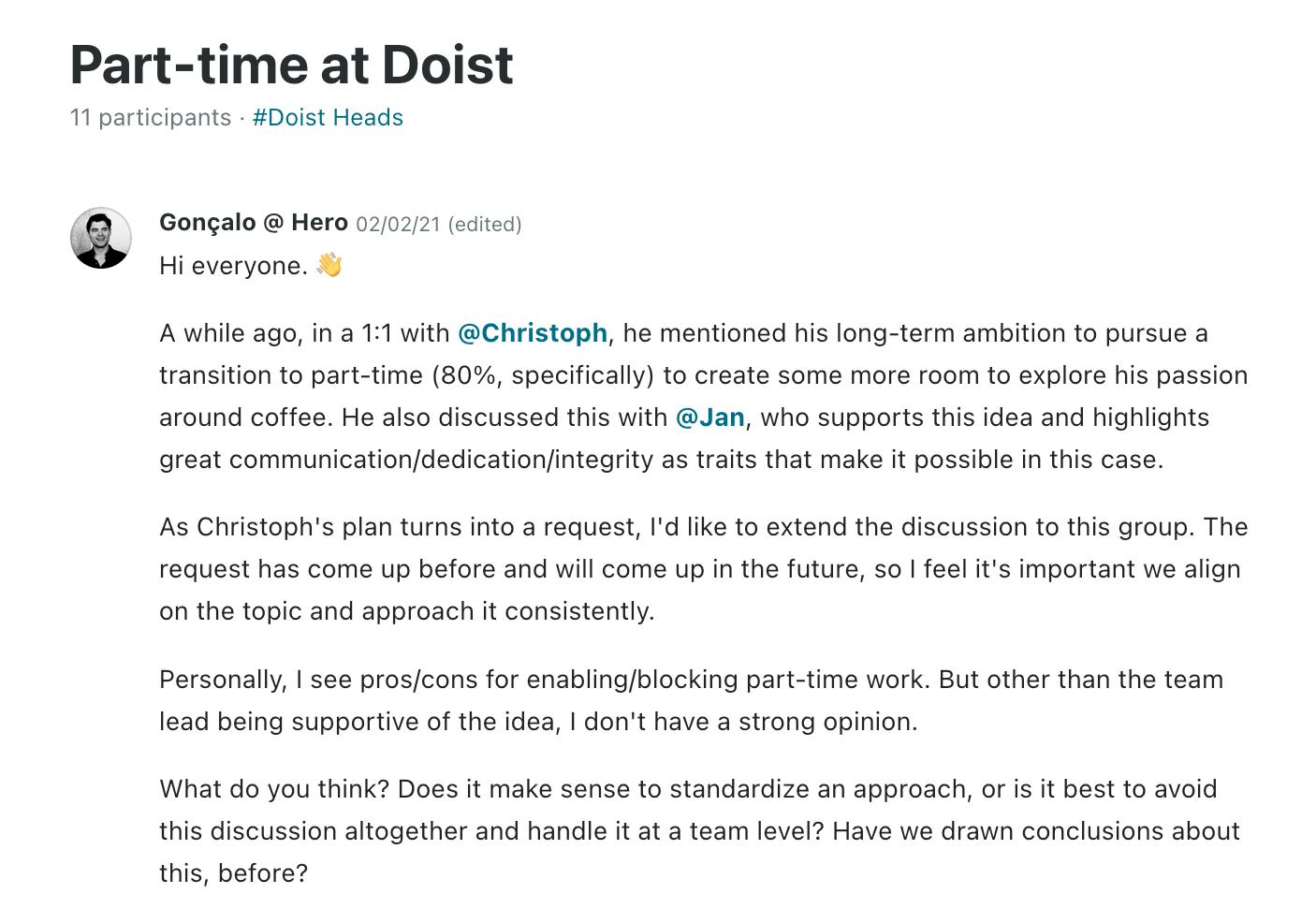
I’m not arguing that in-person and real-time collaboration isn’t important for creative work. On the contrary. Our fully remote company has found regular retreats, weekly team calls, and various social events indispensable. These less formal interactions build the mutual trust and connection necessary for everyone to feel secure enough to take risks and push back on our status quo. But that doesn’t mean we should always default to real-time when it comes to our work.
If you’re someone who thrives in the office or in meetings or in fast-paced Slack exchanges, fair enough. But I’d encourage you to consider what and whose perspectives you may be excluding when you default to real-time collaboration. You may be surprised at how much more insight, innovation, and ideas your team has to offer if you give everyone the time and space to express it.
Async challenge of the week
The next time you find yourself reaching for your calendar to schedule a team brainstorm, give people a chance to generate ideas asynchronously first in a Twist thread, Google doc, or a virtual whiteboard tool like Mural. (You can even turn on private mode in your whiteboard to hide individual contributions until everyone's had a chance to weigh in.)
You can always call a meeting to converge on an idea later.
![Twist thread in the #Doist Marketing channel including 8 participants titled "[Async Brainstorm] Retreat Social Content"](https://async.twist.com/content/images/2022/07/how-async-combats-groupthink_screenshot_1.png)
A remote onboarding tip
At Doist, we include some optional mini-challenges in our Todoist onboarding project template for new teammates to cross off in their first weeks. One of them is suggesting a new feature or product improvement in Twist. It's a fun way to get people comfortable starting their own Twist threads (which can be a bit intimidating at first) and proposing new ideas to the team.
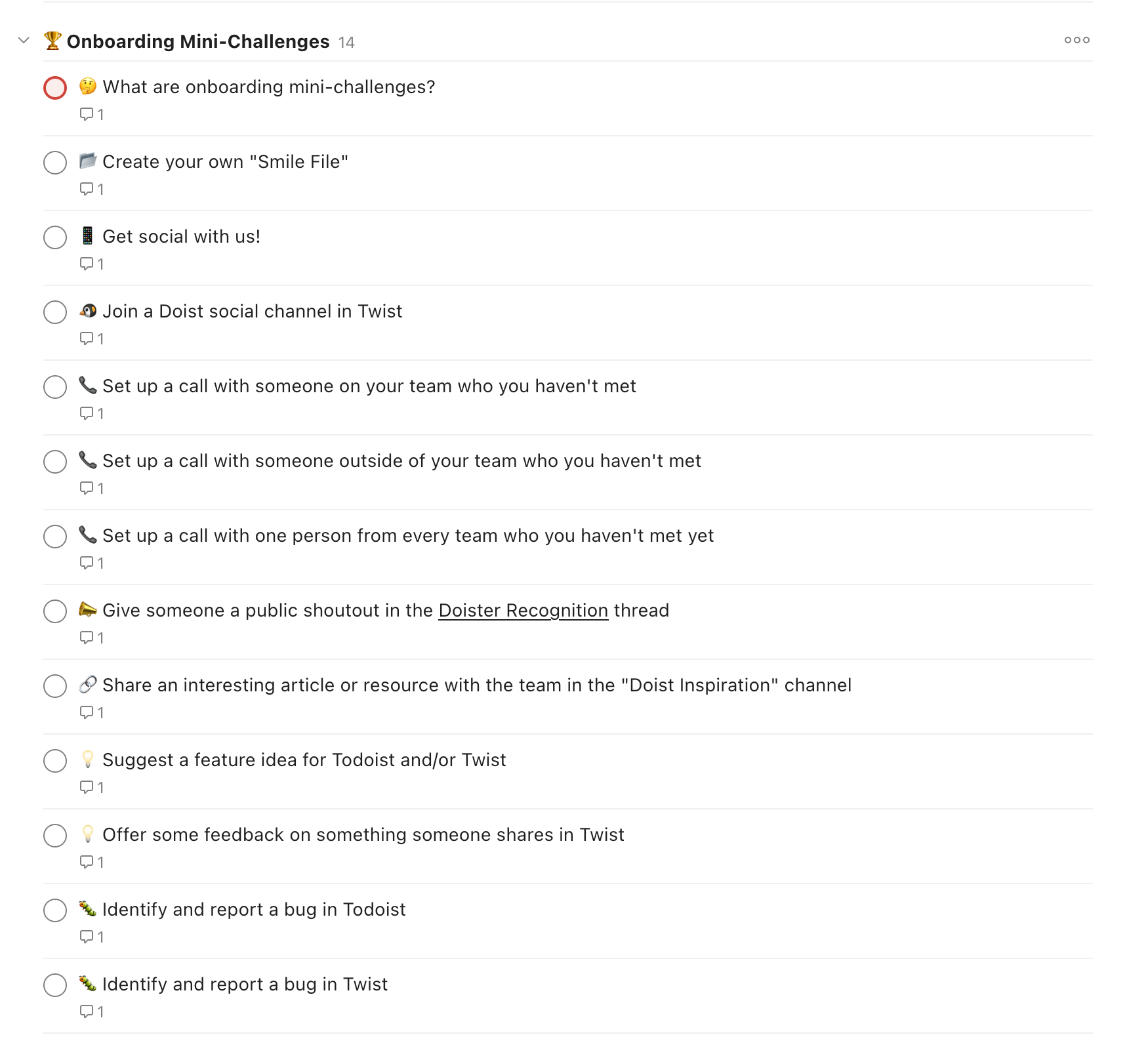
3 things worth sharing
- The People-First Jobs board. If your workplace culture won't change, it may be time to look for a company that already shares your values. People-first Jobs collects openings from companies are already living the future of work in the best sense possible. If I were looking for a job, it would be the first place I'd look.
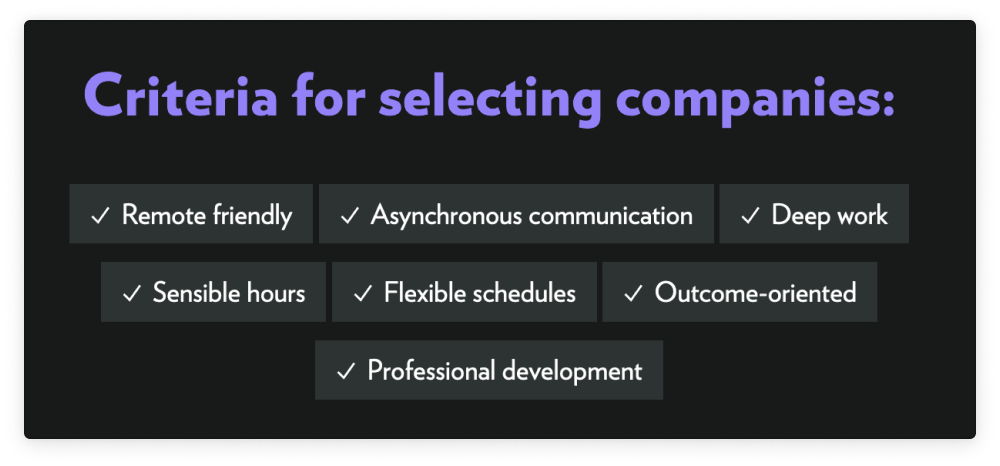
- This interview with Fields Medal-winning mathematician June Huh that highlights the slippery nature of creativity, innovation, and knowledge work:
On any given day, Huh does about three hours of focused work. He might think about a math problem, or prepare to lecture a classroom of students, or schedule doctor’s appointments for his two sons. “Then I’m exhausted,” he said. “Doing something that’s valuable, meaningful, creative” — or a task that he doesn’t particularly want to do, like scheduling those appointments — “takes away a lot of your energy.”
- The perfect response to the interview question "do you work well under pressure?".
What’s Twist? Twist is an async messaging app for teams burned out by real-time chat, meetings, and email.
You don’t need to use Twist to get a ton of value out of this newsletter and community. But if the topics we talk about resonate with you, there’s a good chance the app will too. See what makes Twist different →
🌎 Built asynchronously by the fully remote team at Doist
